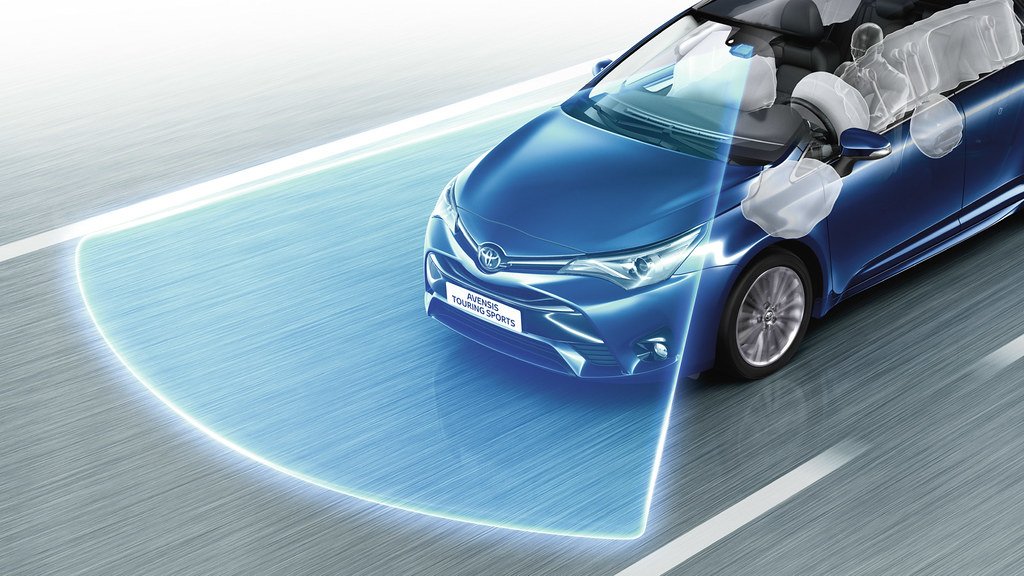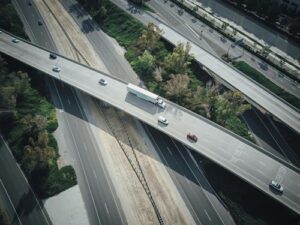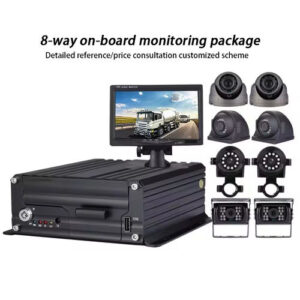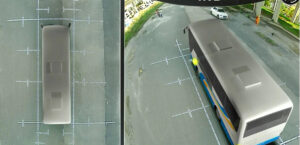Introduction to Vehicle Cameras in Fleet Operations
In today’s dynamic transportation landscape, vehicle cameras have emerged as a pivotal tool in fleet management. These cameras serve not only as a means of monitoring vehicle activities but also enhance overall operational safety and efficiency significantly. As fleet operators strive for optimal performance, the incorporation of vehicle cameras is increasingly being recognized as a best practice that addresses various challenges associated with vehicle and driver management.
Vehicle cameras function fundamentally by providing real-time monitoring and recording capabilities. This allows fleet managers to maintain a constant view of their operations, leading to timely interventions in case of any irregularities or unsafe driving behaviors. The high-definition video footage captured by these cameras serves as an invaluable resource for analyzing incidents, whether they involve accidents, near misses, or driver misconduct. By promoting accountability through video evidence, vehicle cameras foster a culture of safety within the fleet.
Moreover, vehicle cameras are equipped with innovative features such as collision detection and lane departure warnings, which further enhance their functionality. These features not only help in preventing accidents but also contribute to a decrease in insurance costs and liability claims. The ability for fleet managers to review footage enables them to conduct comprehensive investigations post-incident, providing insights that can lead to improved training and preventive measures.
As technology advances, vehicle cameras continue to evolve, integrating with telematics systems to offer even richer data analytics. This synergy enhances decision-making processes by enabling fleet operators to track performance metrics and driver behavior effectively. Thus, investing in vehicle cameras has transitioned from being merely an optional enhancement to an essential component of modern fleet operations, driving both safety and efficiency to new heights.
Improving Safety and Reducing Liability
Vehicle cameras have fundamentally transformed fleet management by significantly enhancing safety for both drivers and other road users. The primary benefit of these cameras lies in their ability to provide valuable video footage that plays a crucial role in accident analysis. When incidents occur, having recorded evidence enables fleet managers to review the circumstances surrounding the event accurately. This footage can clarify the details of an accident, helping to identify fault and ultimately providing necessary insights for any subsequent investigations.
Moreover, the use of vehicle cameras can substantially mitigate liability claims. In many instances, fraudulent claims arise from misunderstandings or deliberate deceit, which can result in financial losses and reputational damage for fleets. With comprehensive video evidence, companies can defend themselves against unwarranted claims, thereby lowering the overall risk and associated costs. This protective measure not only secures the fleet’s financial interests but also fosters a culture of accountability among drivers, as they are aware that their actions are being monitored.
Additionally, vehicle camera data can be a powerful tool for driver training and behavior correction. By analyzing recorded footage, fleet managers can identify areas where drivers may need improvement, such as maintaining safe following distances or adhering to speed limits. This targeted feedback enables more constructive training sessions tailored to individual driver needs, promoting safer driving habits over time. Furthermore, the visualization of driving behaviors provides a profound learning experience, which can lead to reductions in accidents and improvements in overall safety metrics across the fleet.
Incorporating vehicle cameras into fleet operations not only enhances safety protocols but also creates an environment that encourages responsible driving behavior. Through advanced monitoring and educational initiatives, fleets can truly elevate their standards, ensuring the safety of drivers and other road users alike.
Enhancing Operational Efficiency and Productivity
Vehicle cameras have become an integral component in elevating fleet management, particularly in improving operational efficiency and productivity. One of the primary advantages of implementing vehicle cameras is the ability to monitor driver behavior effectively. By capturing real-time video footage, fleet managers can identify habits such as harsh braking, rapid acceleration, and unsafe lane changes. This data enables targeted training and feedback, promoting safer driving practices and potentially reducing accident rates, thus enhancing overall fleet productivity.
Moreover, vehicle cameras contribute to optimizing routes, which is crucial for operational efficiency. With access to visual data on traffic conditions, road hazards, and overall driving patterns, fleet managers can make informed decisions about the most efficient routes for their drivers. This not only saves time but also minimizes fuel consumption. When drivers adhere to more efficient routes and maintain consistent speeds, fuel expenditure decreases, further enhancing productivity and cost-efficiency in fleet operations.
In addition to influencing driving behavior and route planning, vehicle cameras play a significant role in vehicle maintenance. By monitoring driving patterns, fleet managers can gain insights into aspects that might impact vehicle longevity, such as overloading or frequent idling. Understanding these driving habits allows fleets to implement preventive maintenance schedules tailored to individual vehicle usage, reducing the likelihood of breakdowns and preserving vehicle integrity. Consequently, this proactive approach to maintenance can lead to significant cost savings and increased operational uptime, showcasing the multifaceted benefits of vehicle cameras in fleet management.
Through improved driver behavior monitoring, route optimization, and targeted vehicle maintenance strategies, the implementation of vehicle cameras enhances overall operational efficiency and productivity. These systems provide fleet operators with the necessary tools to not only cut costs but also elevate their service levels, ultimately contributing to a more efficient and profitable fleet management strategy.
Implementation and Best Practices for Fleet Managers
Implementing a vehicle camera system within a fleet management framework requires a structured approach to ensure its effectiveness and acceptance among all stakeholders. First and foremost, selecting the right type of camera system is crucial. There are several options available, ranging from dash cameras to multi-camera set-ups that provide comprehensive coverage of both the interior and exterior of vehicles. When deciding on the camera system, fleet managers should consider factors like video quality, storage capacity, and cloud integration capabilities. These features will not only enhance safety but also facilitate real-time reporting and analytics.
Another significant aspect to consider is data privacy. As vehicle cameras will capture various visual data, fleet managers must establish clear policies regarding the use and storage of this footage. It is essential to comply with local data protection regulations, which may dictate how long footage can be retained and who has access to it. Communicating these policies to drivers and staff will help in establishing trust and transparency. Fleet managers should also consider implementing a consent form that outlines how camera data will be used and the benefits it brings to the fleet operation.
Integrating camera footage into existing fleet management systems is another critical step. This integration allows for streamlined operations, enabling managers to analyze driver behavior and vehicle performance in conjunction with existing data. Additionally, fostering alignment among drivers and management regarding the implementation of vehicle cameras can lead to smoother transitions. Training sessions and open discussions about the benefits and functionalities of the system can alleviate concerns and encourage acceptance. Establishing a culture that prioritizes safety and accountability will ultimately enhance the performance of the fleet while leveraging cutting-edge technology.






